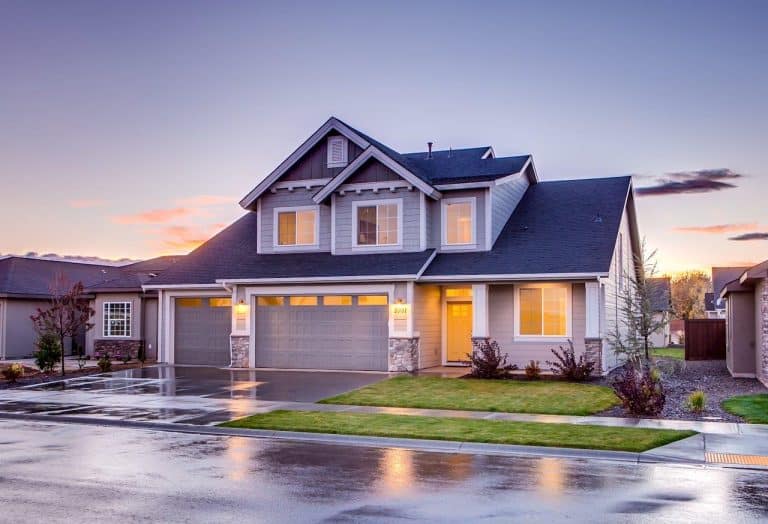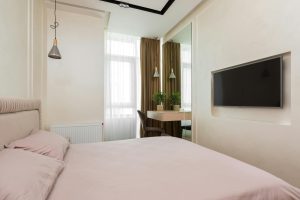Window upgrades have become one of the most popular home renovations in recent years. According to the 2024 Cost vs. Value Report, window replacement consistently ranks among the top five home improvement projects for return on investment, with homeowners recouping nearly 69% of costs on average at resale. This trend reflects the growing desire for renovations that combine functionality, energy efficiency, and aesthetic appeal.
But how do curved windows compare to flat ones, and which is the better choice for your home? Let’s explore the key differences, advantages, and considerations for both styles.
The Main Differences Between Flat and Curved Glass
At first glance, the distinction may seem purely visual—flat windows have straight panes, while curved windows bend gracefully into an arc or rounded shape. However, the differences run much deeper:
1. Manufacturing Process
o Flat glass is produced in large sheets and cut to standard or custom sizes. It is straightforward to manufacture, making it widely available and relatively cost-effective.
o Curved glass requires a more complex process. A custom steel mold is shaped to the desired curve, heated to a precise temperature, and then used to bend the glass without compromising strength. The process demands specialized equipment and skilled craftsmanship.
2. Design and Aesthetics
o Flat windows provide clean lines and symmetry, ideal for modern minimalist or traditional architectural styles.
o Curved windows soften edges, add depth, and create a striking focal point. They bring fluidity to design and often serve as conversation pieces.
3. Functionality
o Flat windows offer straightforward installation, replacement, and repair.
o Curved windows allow light to enter from multiple angles, reduce glare, and provide panoramic views, but they require expert installation to ensure proper sealing and structural integrity.
Why Curved Glass is Custom-Made and Needs to be Properly Installed
Installing curved glass is significantly more complex than working with flat panes. The curvature means that every piece of a curved window is custom-made, and it must fit perfectly within the window frame. Small errors in measurement or alignment can cause gaps, leaks, or even breakage during installation.
Additionally, curved glass is heavier and more delicate to handle than flat sheets. Professionals not only have the right equipment but also the training to ensure a safe and secure installation. When done properly, curved windows enhance your home’s design and function for decades; when done poorly, they can lead to costly repairs. This is why curved glass should always be handled by experienced installers rather than treated like a standard window replacement.
Pros of Flat Window
Flat glass windows remain the most common choice for good reason. Here are three key advantages:
1. Affordability
Flat windows are more economical because they are mass-produced and widely available. Their straightforward manufacturing process and ease of installation keep costs down, making them accessible for most renovation budgets.
2. Versatility
Flat glass comes in countless sizes, styles, and finishes, from double-hung and casement windows to sliding doors and skylights. Whether you prefer modern, traditional, or rustic architecture, flat windows can be tailored to suit any aesthetic.
3. Ease of Maintenance and Replacement
If a flat window breaks or loses efficiency, replacement is relatively simple. Because flat glass is standardized, finding and installing a new pane is quick and cost-effective compared to the custom work required for curved glass.
Pros of Curved Windows
Curved glass is less common but offers unique benefits that flat windows can’t match.
1. Distinctive Aesthetic Appeal
Curved windows create an immediate sense of elegance and sophistication. Their flowing shape adds architectural interest, softens sharp corners, and can turn a simple wall into a design centerpiece.
2. Enhanced Light and Views
Because curved glass bends light differently, it allows sunlight to enter from multiple angles. This produces softer illumination and reduces glare indoors. Curved windows also provide a panoramic effect, expanding your view of the outdoors and making rooms feel larger and more connected to nature.
3. Architectural Versatility
Curved windows work across a wide range of styles—from traditional arched openings to sleek, modern designs. They can be used in bay windows, skylights, staircases, or even entire façades. For homeowners looking to make a bold design statement, curved glass is unmatched.
Which Is Best for Your Home?
The choice between flat and curved glass depends on your priorities.
• If budget, availability, and practicality are most important, flat windows are the clear winner. They’re cost-effective, versatile, and easy to maintain.
• If design impact, natural light, and uniqueness are your goals, curved windows provide unmatched beauty and character—though at a higher price and with the need for expert installation.
Many homeowners ultimately choose a combination: using flat glass for standard windows and incorporating curved glass in focal areas such as bay windows, entryways, or sunrooms. This allows for both practicality and visual impact without overextending the budget.
Conclusion
Window renovations are one of the most rewarding ways to transform a home, boosting both comfort and curb appeal. While flat windows remain the practical standard, curved glass is rapidly gaining popularity for homeowners who want to infuse elegance and individuality into their spaces.
Flat windows win on affordability, versatility, and ease of replacement, while curved windows stand out for their aesthetics, light-enhancing qualities, and architectural flexibility.
The right choice depends on your vision, budget, and willingness to work with experts for installation. No matter which you choose, updating your windows is an investment that will elevate your home’s look, feel, and value for years to come. For more renovation ideas, do read our other home improvement articles.













